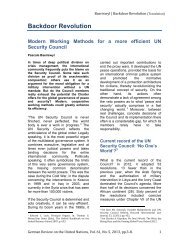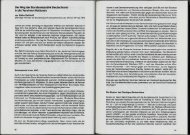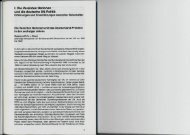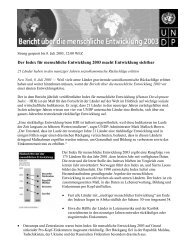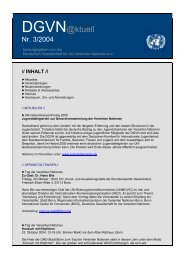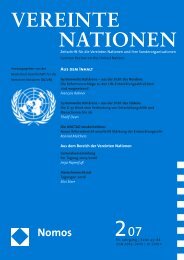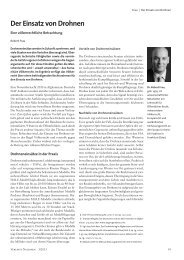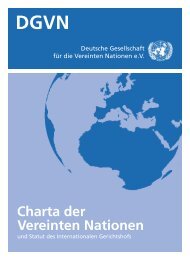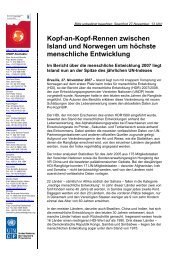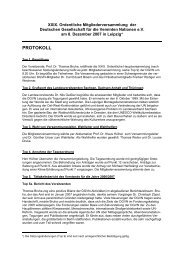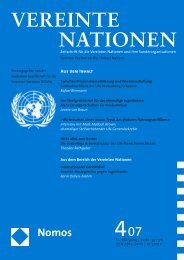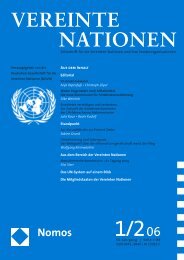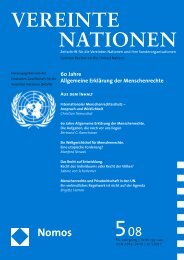One Ocean, Many Worlds of Life - Convention on Biological Diversity
One Ocean, Many Worlds of Life - Convention on Biological Diversity
One Ocean, Many Worlds of Life - Convention on Biological Diversity
Create successful ePaper yourself
Turn your PDF publications into a flip-book with our unique Google optimized e-Paper software.
and growth rates <str<strong>on</strong>g>of</str<strong>on</strong>g> many deep-sea fishes makes them especially vulnerable<br />
to the impacts <str<strong>on</strong>g>of</str<strong>on</strong>g> fishing—so much so, that it seems likely that for many<br />
species, <strong>on</strong>ce a stock has been depleted, it will take decades, and potentially<br />
centuries, before it will recover.64<br />
It is frequently suggested that the soluti<strong>on</strong> to all this is to raise fish in “farms”<br />
instead <str<strong>on</strong>g>of</str<strong>on</strong>g> taking them from the wild. Unfortunately, although aquaculture<br />
can, under certain circumstances, c<strong>on</strong>tribute effectively to the amount <str<strong>on</strong>g>of</str<strong>on</strong>g><br />
fish available for human c<strong>on</strong>sumpti<strong>on</strong>, and do so in such a way that does<br />
not damage the envir<strong>on</strong>ment, far too <str<strong>on</strong>g>of</str<strong>on</strong>g>ten it compounds the problem that<br />
it ostensibly should be helping to solve. More than 33 milli<strong>on</strong> t<strong>on</strong>nes <str<strong>on</strong>g>of</str<strong>on</strong>g><br />
fish—approximately <strong>on</strong>e-third <str<strong>on</strong>g>of</str<strong>on</strong>g> the global fish catch—is caught annually<br />
for purposes other than human c<strong>on</strong>sumpti<strong>on</strong>, primarily for reducti<strong>on</strong> into<br />
fish oil or fish meal that are used for livestock, and domestic animal feed,<br />
but also for feeding to other fish. The amount <str<strong>on</strong>g>of</str<strong>on</strong>g> fish that has been caught<br />
to feed farmed fish such as salm<strong>on</strong>, catfish, snapper and flounder, as well<br />
as species such as tuna that are caught in the wild when young and then<br />
fattened in pens, has grown enormously, from under <strong>on</strong>e milli<strong>on</strong> t<strong>on</strong>nes in<br />
1970 to over 13 milli<strong>on</strong> t<strong>on</strong>nes today.65<br />
In additi<strong>on</strong> to removing milli<strong>on</strong>s more fish from the sea, fisheries for aquaculture,<br />
fishmeal and fish oil also take fish that might otherwise find its way<br />
into the mouths <str<strong>on</strong>g>of</str<strong>on</strong>g> hungry people. For example, <strong>on</strong>ly 43,000 t<strong>on</strong>nes—or<br />
0.73 percent <str<strong>on</strong>g>of</str<strong>on</strong>g> the total Peruvian anchoveta harvest <str<strong>on</strong>g>of</str<strong>on</strong>g> 5,935,302 t<strong>on</strong>nes—was<br />
destined for direct human c<strong>on</strong>sumpti<strong>on</strong> in 2006; 99.3 percent <str<strong>on</strong>g>of</str<strong>on</strong>g> the total<br />
anchoveta catch was reduced to fishmeal and fish oil.66<br />
Furthermore, <str<strong>on</strong>g>of</str<strong>on</strong>g> 357,000 t<strong>on</strong>nes <str<strong>on</strong>g>of</str<strong>on</strong>g> processed fish products produced in<br />
Peru in 2006 for direct human c<strong>on</strong>sumpti<strong>on</strong>, 329,000 t<strong>on</strong>nes—over 92<br />
percent—was exported.67 Nor is that example atypical: although the growth<br />
in commercial fisheries is sometimes ascribed to the need to feed a growing<br />
world populati<strong>on</strong>, approximately 80 percent <str<strong>on</strong>g>of</str<strong>on</strong>g> internati<strong>on</strong>ally traded fish<br />
products are imported by the developed world, where populati<strong>on</strong> growth and<br />
levels <str<strong>on</strong>g>of</str<strong>on</strong>g> hunger are generally both low.68 In fact, because the fishing industry<br />
has caused fish stocks worldwide to decline and collapse, and because many<br />
<str<strong>on</strong>g>of</str<strong>on</strong>g> those fish have been taken from the waters <str<strong>on</strong>g>of</str<strong>on</strong>g> less developed nati<strong>on</strong>s and<br />
c<strong>on</strong>sumed by the inhabitants <str<strong>on</strong>g>of</str<strong>on</strong>g> more developed <strong>on</strong>es, it has been estimated<br />
that, without overfishing, approximately 20 milli<strong>on</strong> undernourished people<br />
worldwide could have avoided that undernourishment in the year 2000.69<br />
44 Marine BiOdiversity



